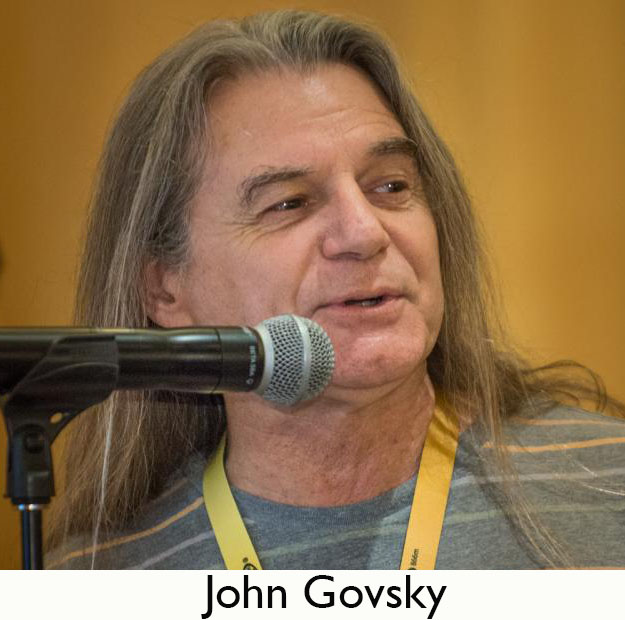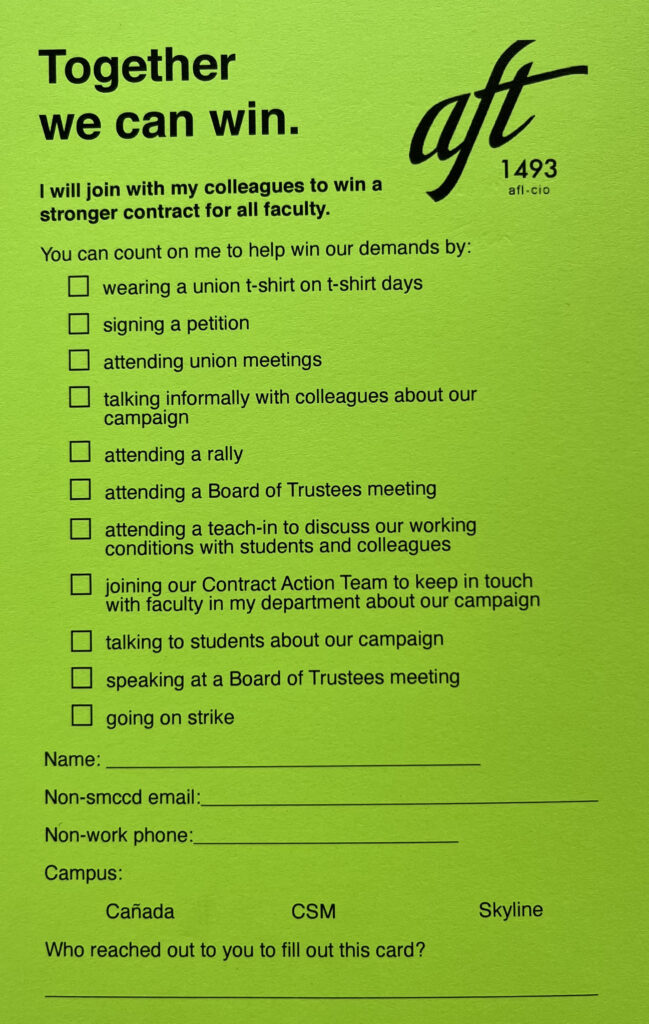Anti-Racist Unionism
What does it mean to be an anti-racist union? Reviewing the history of racism and anti-racism in organized labor
by David Lau, AFT 1493 CSM Chapter Chair
At the February AFT 1493 membership meeting, local members held a discussion about the history of organized labor and race in the United States and what it means to be an anti-racist union. Cañada College Chapter Chair Michael Hoffman led the discussion by summarizing a number of issues presented in historian Philip Foner’s classic book Organized Labor and the Black Worker: 1619-1973. While the book contains many historical lessons, Michael brought out some specific aspects in the text.
Foner depicts a complex relationship between organized labor and Black workers, one with several variables. Foner’s text focuses on the struggle within organized labor over how to approach the racial divisions created in the U.S. since the end of emancipation. Racist exclusion—what Mike Davis, writing in Prisoners of the American Dream, calls “the unifying theme” in U.S. labor history—is carefully presented by Foner as a fundamental tool used by employers to weaken labor struggles.
Labor leaders could accept racism or fight against it to unite workers against management
The struggle within organized labor’s leadership took shape around two major tendencies: one that acquiesced to racism and accepted white-supremacist attitudes as insurmountable, and another that actively fought against racist ideas in order to unite workers into a common struggle. As an illustration of these two tendencies, Michael provided two striking passages from Foner:
- When asked why he was not as hard on local unions that were known to discriminate against black workers due to their race as he was on those unions who were found to be corrupt, then President of the AFL-CIO George Meany said in 1961:
“I do not equate problems of racial discrimination with the problems of corruption any more than I equate Hungary with Little Rock.”
- On the other side of the spectrum, the CIO Committee to Abolish Discrimination produced a 1942 pamphlet educating union members about the need to work against racist divisions:
“The position of the union in this respect must be firmly taken … separation or segregation of workers in any form is undemocratic and unnecessary. If segregation is tolerated by the union in one manner it can be practiced by management without respect for the union’s wishes in other matters.”
Positive examples of anti-racist unionism
Michael also emphasized how Foner depicts the rich history of anti-racist labor struggle which struck powerful blows to white supremacist ideas and policies. When organizations like the United Mine Workers, the Industrial Workers of the World, and the Knights of Labor took up broad solidarity between Black workers, native-born workers, and immigrants, they often had successes. Friedrich Engels thought the Knights of Labor, with its pioneering attempts to organize Black and women workers, signaled the birth of working-class mass politics in the United States. Foner, for his part, calls the 1930s-era Congress of Industrial Unions (CIO) “the most important single development since the Civil War in the Black worker’s struggle for equality.”
Foner lays out the historical connection between anti-union and white racist politics. The same kind of mob violence that was used to terrorize Black people in the south, was also deployed against the labor movement in concert with employers. The principled radicals—many of whom were Communist Party USA members in the 1920s, 30s and 40s—who were instrumental in the most successful anti-racist union practices in the CIO were all purged during the long period of McCarthyism and anti-communism after the Second World War. Foner highlights the ways in which anti-communism became another tool used to weaken both the labor and the civil rights movements, ushering in a decline in US labor’s power in the decades following the 1970s.
Today’s smaller, more diverse labor movement is more committed to anti-racist organizing
Michael concluded by noting how important it is for the labor movement to adopt an anti-racist practice of inclusion and open discussion of race and racism. He emphasized that the greatest gains in the labor movement involved active, deliberate anti-racism grounded in the principle of solidarity between all workers. I noted in the meeting how the much smaller labor movement today is strikingly diverse. Concentrated in the public sector unions like ours, union activists tend to be multicultural and commonly dedicate themselves to equality and justice for oppressed groups. While we are much smaller and largely uprooted from the private sector compared to the times analyzed by Foner, our labor movement now has strength in solidarity. We also benefit from complex historical criticisms of our national labor movement, like those presented by Michael in his analysis of Philip Foner’s book. It’s essential for the labor movement in general, and for local unions–like our own–to continue to do the essential work of building anti-racist organizations and movements.
Would you like to join a labor history reading group this summer? If so, please contact AFT CSM Executive Committee Co-Rep. Evan Kaiser at kaiser@aft1493.org.
Recommended Reading:
- Philip Foner. Organized Labor and the Black Worker: 1619-1981 (also available for free from Open Library)
- Mike Davis. Prisoners of the American Dream (also available for free from Open Library)
- Philip Dray. There Is Power in a Union


 In 1978, the California Community Colleges Board of Governors approved the principle of limiting part-time faculty teaching to 25% of credit instruction. Ten years later AB 1725, authored by John Vasconcellos, codified the goal of “75/25” to “address longstanding policy of the board of governors that at least 75 percent of the hours of credit instruction in the California Community Colleges, as a system, should be taught by full-time instructors.”
In 1978, the California Community Colleges Board of Governors approved the principle of limiting part-time faculty teaching to 25% of credit instruction. Ten years later AB 1725, authored by John Vasconcellos, codified the goal of “75/25” to “address longstanding policy of the board of governors that at least 75 percent of the hours of credit instruction in the California Community Colleges, as a system, should be taught by full-time instructors.”

